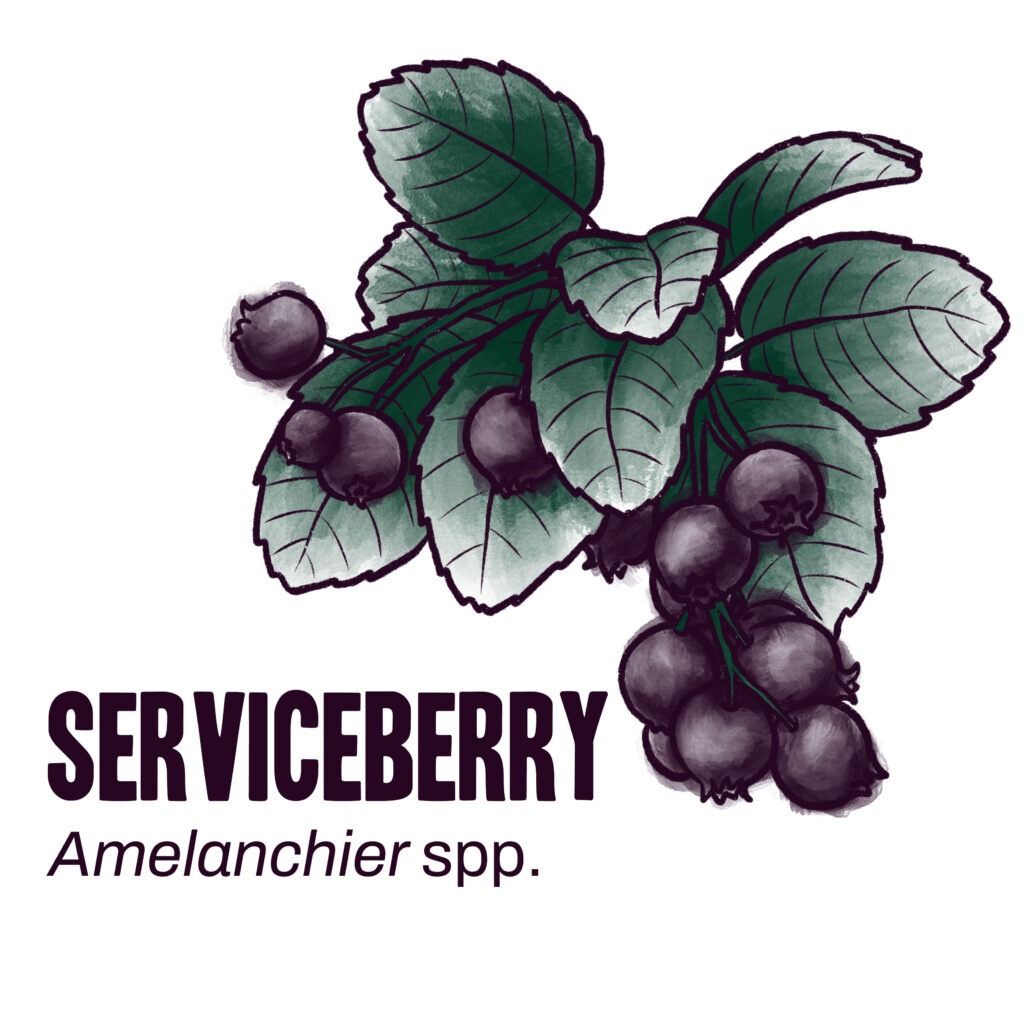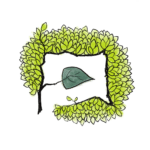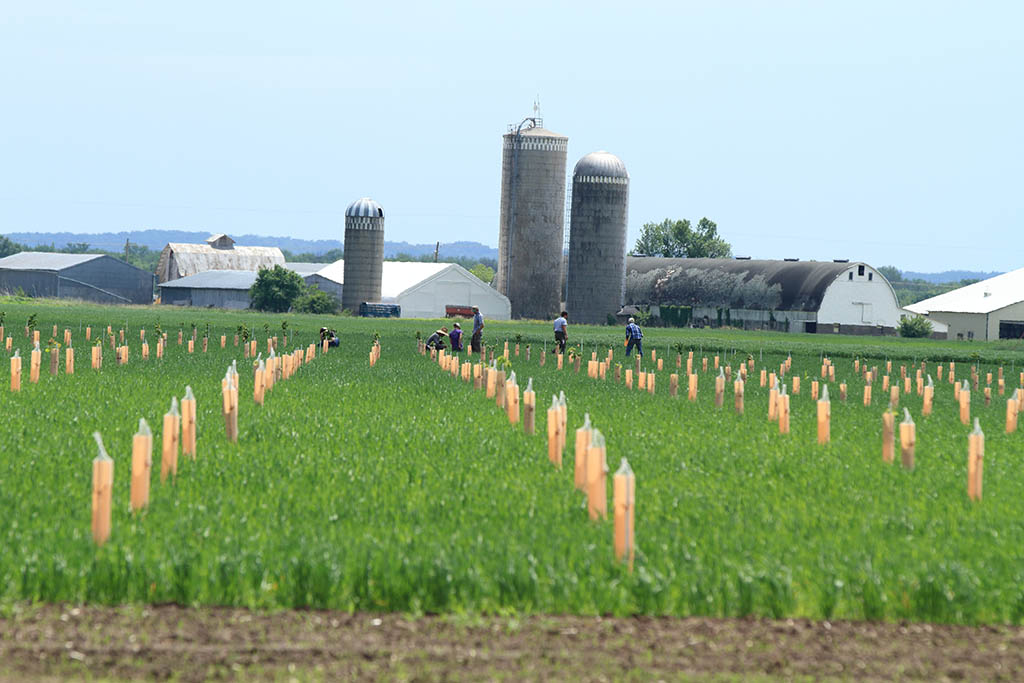
Serviceberry
Amelanchier spp.
Called saskatoon, serviceberry, shadbush, or juneberry, this nutritious fruit can be eaten fresh or processed as jams, juices, or vitamin-rich additives. One of the earliest shrub berry crops to ripen, their flowers are an early source of food for pollinators. Machine-harvestable.
DRAINAGE: Moderate to well-drained soils
LIGHT: Full sun
ZONES: 2–5
SPACING: 3-5 ft in BETWEEN ROWS: 12–16 ft; 17–20 ft for machine harvest
YEARS TO PARTIAL/FULL BEARING: 3
HARVEST SEASON: June–August
Opportunities
This machine-harvestable berry can fit well in diversified systems. The Amelanchier family includes dozens of species that are native to North America. The species most commonly grown for fruit is Amelanchier alnifolia, usually referred to as serviceberry, saskatoon, or juneberry. The fruit are about the size of a blueberry but with more variation in color and a different, but agreeable taste.
Challenges
Few consumers are familiar with juneberry, and you-pick operations can help grow local demand. Fresh fruit does not keep long and must be refrigerated immediately after harvest. Freezing is the most common processing method for commercial production.
Management
Self-pollinating. Different varieties grow better in different regions. Pruning necessary.
Our Research
Fields Restored Demonstration Farm in Northern Illinois grows juneberry in a 14-acre fruit, nut, and hay alley cropping planting. There are multiple improved cultivars of serviceberry at Fields Restored, specifically chosen for their berry taste and quality.


RESOURCE
Serviceberry, Juneberry, Saskatoon Infosheet
- Review more basic grower information about plant selection and management.
- See an economics case study and find more sources for information.
- You can also print this handout to use at educational events or for outreach.


Learn About More Berry Crops in the Midwest
We’ve collected some clips of key perennial crops grown by Midwestern farmers. Let’s get started with small fruits!

One-On-One Support for Farm Planning
Technical Assistance Program
Get help planning your perennial farm system. Our Technical Assistance Program is here to guide you through the process of planning, funding, and planting trees on your farm.

